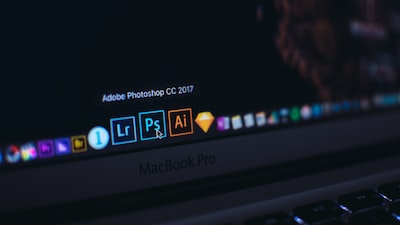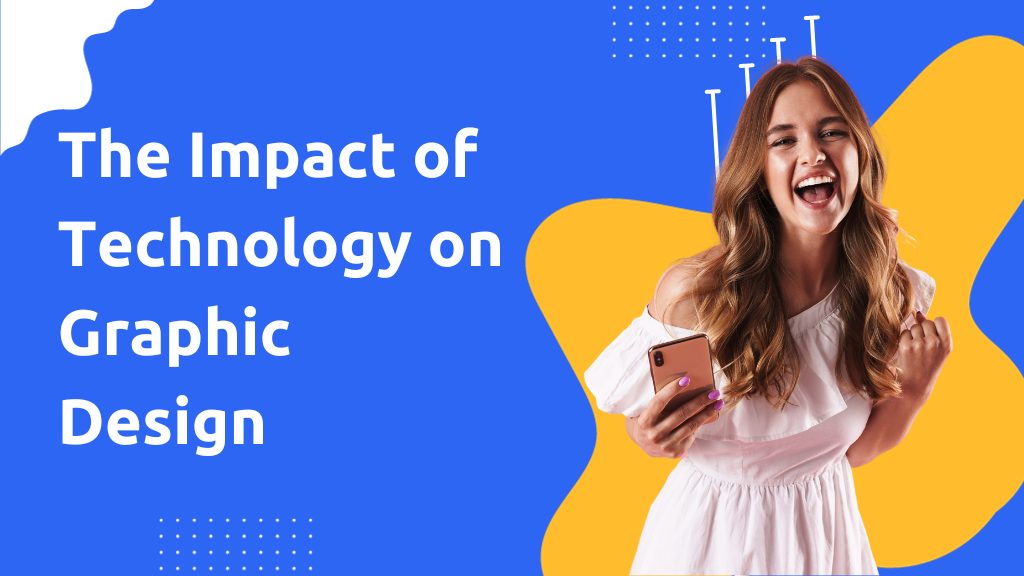Graphic design, the art of visual communication through the use of typography, imagery, color, and form, has been an integral part of human expression since ancient times. From the cave paintings of the Stone Age to the sophisticated digital advertisements of the 21st century, the field of graphic design has undergone a remarkable evolution. This transformation has been significantly propelled by technological advancements, which have not only enhanced the efficiency and productivity of designers but have also expanded the horizons of creativity and expression.

The impact of technology on graphic design is a multifaceted phenomenon that has reshaped the industry’s landscape, tools, methodologies, and business models. As we delve into this topic, we will explore how each technological milestone has contributed to the metamorphosis of graphic design, examining the shift from traditional techniques to digital mastery. The journey from the painstaking processes of manual typesetting and hand-drawn illustrations to the click-and-drag simplicity of modern design software reflects a broader narrative of innovation and change.
In this comprehensive exploration, we will dissect the various aspects of how technology has influenced graphic design, from the revolutionary introduction of the Macintosh computer to the ubiquitous presence of design in the digital realm. We will investigate the transformative effects of software applications, the advent of hardware specifically tailored for design, and the global connectivity facilitated by the internet. Furthermore, we will consider the implications of these changes on education, the business of design, and the ethical considerations that emerge as technology continues to advance.
As we embark on this journey through the annals of design and technology, we will uncover the indelible mark that technological progress has left on the world of graphic design, setting the stage for a future where the only constant is change.
The Evolution of Graphic Design Tools:
The graphic design industry has witnessed a profound transformation over the centuries, evolving from the rudimentary tools of the Stone Age to the sophisticated digital platforms of the modern era. This evolution has been inextricably linked with technological advancements, which have not only redefined the tools of the trade but have also expanded the very definition of graphic design.” Says Says Sean Frank, CEO of LA Police Gear
From Manual Craftsmanship to Digital Precision:
In the early days, graphic design was a manual craft. The late 19th century saw the rise of printed posters, which required designers to meticulously arrange type by hand and use lithography—a printing process that involved etching onto a flat stone or metal plate. This was a labor-intensive process that demanded both time and skill.

The introduction of the typewriter and the offset printing press brought about significant changes, allowing for faster production and more consistent quality. However, it wasn’t until the advent of the personal computer that the graphic design industry underwent its most revolutionary change.
Generate More Leads With Website & Messenger Chatbots
Gather quality leads on autopilot and 10x your ROI with automated chats
Desktop Publishing and the Macintosh Revolution:
With the launch of the Apple Macintosh in 1984, graphic design became more accessible. The Macintosh, along with software like Adobe Photoshop and Illustrator, introduced the concept of desktop publishing. This allowed designers to create and manipulate digital images and layouts with a precision that was previously unattainable. The pixel became the new brush stroke, and the screen became the new canvas.
The Software Revolution:
The emergence of design-specific software has been a game-changer. Applications such as Adobe Photoshop, Illustrator, and InDesign have become industry standards, offering tools that simulate traditional techniques like painting, drawing, and typesetting with digital efficiency. The ability to undo and redo, to experiment without the fear of permanent mistakes, has unleashed a wave of creativity and experimentation among designers.
Hardware Advancements: More Than Just Computers:
The evolution of graphic design tools is not limited to software. Hardware advancements have played an equally important role. High-resolution monitors have allowed designers to see the finest details of their work, while graphic tablets and styluses have replicated the hand-eye coordination of drawing on paper.

3D printers have opened up new possibilities in product design, allowing for rapid prototyping and the creation of complex shapes that would be difficult or impossible to achieve with traditional manufacturing methods.
The Internet: A New Frontier for Design:
The rise of the internet has introduced a new medium for graphic design. No longer confined to print, designers now create a digital landscape that is ever-changing. The web has become a dynamic space where design can be interactive and responsive to user behavior.

Online platforms have also facilitated collaboration like never before. Designers can work with clients and colleagues from around the world, sharing files and feedback instantaneously. This has led to a more iterative design process, where ideas can be developed and refined in real time.
Software Revolution in Graphic Design:
“The software revolution has been a cornerstone in the evolution of graphic design, fundamentally altering the landscape of creation, editing, and production. This revolution has not only streamlined the design process but has also opened up new avenues for creativity and innovation.” Says Andy Fryer, Co-Founder of Easy Signs

The Adobe Suite and Its Impact:
Adobe has been at the forefront of the software revolution in graphic design. The introduction of Photoshop in 1990 was a watershed moment, allowing designers to manipulate images in ways that were previously unimaginable. Photoshop’s layers, filters, and effects have become tools of the trade for photo editing and complex image creation.
Illustrator, another Adobe product, has transformed the way designers work with vector graphics, providing precision and scalability that is essential for logo design and typographic work. InDesign has become the standard for layout design, enabling the seamless assembly of text and images for print and digital publications.
The Rise of Web Design Software:
As the internet became a dominant platform for content, the need for web design became apparent. Early web design was limited by the capabilities of HTML and the constraints of early web browsers. However, software like Adobe Dreamweaver provided a visual interface to design websites, bridging the gap between graphic design and web development. For online consultants and freelancers who often manage their own projects, handling invoices efficiently is crucial. Using an online consulting invoice template can help keep financial tasks organized and ensure timely billing for your services
The emergence of responsive design tools has further revolutionized web design, allowing designers to create websites that adapt to various screen sizes and devices. This adaptability is crucial in a world where mobile devices are increasingly the primary means of accessing the internet.
Open Source Alternatives and Innovation:
The software revolution in graphic design is not limited to commercial products. Open-source software like GIMP (GNU Image Manipulation Program) and Inkscape has provided free, community-developed alternatives to commercial software, democratizing access to graphic design tools.
These open-source tools have fostered innovation, as they are constantly being improved and updated by a global community of developers. They have also made design more accessible, allowing people who may not have the resources to purchase expensive software to still engage in the creative process.
The Impact of Software on Design Processes:
The software revolution has impacted the design process by increasing efficiency and enabling rapid prototyping. Designers can now iterate quickly, testing out multiple ideas and concepts before settling on a final design. This has shortened design cycles and allowed for greater experimentation.
Collaboration has also been enhanced through cloud-based design software like Adobe Creative Cloud, which allows multiple users to work on a single project from different locations. This has facilitated a more collaborative and interactive design process, where feedback can be implemented in real-time. In a similar vein, platforms such as offer specializing in flyer design, offers user-friendly tools that simplify the creation process. It’s designed to empower teams to collaborate effectively and unleash creativity in crafting visually appealing flyers.
Hardware Advancements in Graphic Design:
“The progression of graphic design is not only a tale of software innovation but also one of hardware advancements. The tools that designers use to interact with software have evolved, leading to new possibilities and greater precision in the creation of digital artwork.” Says Janki Mehta, Director at Certera
Graphic Tablets and Styluses: Bridging the Gap Between Digital and Handmade:
Graphic tablets and styluses have revolutionized the way designers draw and illustrate. These devices translate the designer’s hand movements into digital strokes, allowing for a natural drawing experience that mirrors traditional pen and paper. Wacom tablets, for instance, have become essential for illustrators and digital painters, providing pressure sensitivity and tilt recognition which are crucial for detailed artwork.
High-Resolution Displays: Seeing the Finer Details:
The advent of high-resolution displays has had a significant impact on the graphic design process. Apple’s Retina displays and similar technologies allow designers to see their work with incredible clarity, down to the pixel level. This precision is vital for intricate design work and contributes to the overall quality of the final product. To ensure that high-quality images load quickly on these displays, designers often need to compress PNG files without losing detail.
3D Printing: Bringing Designs to Life:
3D printing technology has opened up a new frontier for graphic designers, particularly those working in product and industrial design. With 3D printing, designers can quickly bring their digital models to life, creating physical prototypes that can be touched and interacted with. This technology has shortened the design cycle, allowing for rapid testing and refinement of ideas.
Performance Computing: Handling Complex Tasks with Ease:
The increasing power of computers has also played a crucial role in the development of graphic design. High-performance computing, with advanced CPUs and GPUs, allows designers to work on complex projects with multiple layers and high-resolution assets without experiencing lag or crashes. This reliability is essential for professionals who need to work efficiently and meet tight deadlines.
Virtual and Augmented Reality: Designing in New Dimensions:
Virtual Reality (VR) and Augmented Reality (AR) technologies are beginning to influence the graphic design industry. VR allows designers to create and explore 3D environments, offering a new perspective on space and composition. AR, on the other hand, overlays digital information onto the real world, opening up innovative ways to create and present designs.
The Internet and Graphic Design: A Digital Canvas:
“The internet has not only revolutionized how we communicate but has also fundamentally changed the landscape of graphic design. It has transformed the medium through which design is consumed, and in doing so, has altered the skill set required of modern designers.” Says Jessica Shee from iBoysoft
The Digital Shift:
With the advent of the internet, graphic design extended its reach from print to digital. Websites, online advertisements, and social media platforms became new canvases for designers. This shift required a new understanding of design principles, where user experience (UX) and user interface (UI) design have become as important as aesthetic appeal.
Social Media and Design:
Social media has had a profound impact on graphic design. Platforms like Instagram, Pinterest, and Facebook have become showcases for visual content, where design can go viral and reach a global audience instantly. The demand for eye-catching graphics that stand out in a crowded social media feed has led to the rise of motion graphics and interactive designs that engage users.
Responsive and Adaptive Design:
“The variety of devices used to access the internet has necessitated the development of responsive and adaptive design. Designers must now create work that is flexible and looks good on screens of all sizes, from large desktop monitors to small smartphone screens. This has introduced a new complexity to the design process but also a new level of interaction with the audience.” Says David Floyd, founder of The Pest Informer
The Future of Graphic Design: Emerging Trends and Technologies:

As we look to the horizon, the future of graphic design is poised to be as dynamic and transformative as its past. Emerging technologies and trends are already beginning to hint at what the next chapter might hold for the industry.
Artificial Intelligence and Machine Learning:
AI and machine learning are set to redefine the creative process in graphic design. With tools that can analyze trends, suggest design elements, and even generate basic layouts, designers are finding new ways to augment their creativity and streamline workflows.
Virtual Reality and Augmented Reality:
VR and AR are opening up new realms of possibility in experiential design. Designers are no longer confined to two-dimensional spaces and can now create immersive 3D environments that engage users in entirely new ways.
Sustainability in Design:
As global awareness of environmental issues grows, sustainable design is becoming increasingly important. Designers are considering the lifecycle of their creations, from the digital carbon footprint of online work to the materials used in physical products
Conclusion:
The impact of technology on graphic design is a testament to the resilience and adaptability of creative expression. As we continue to navigate the digital age, the fusion of technology and design will undoubtedly lead to new artistic horizons and redefine the canvas of our shared visual culture.
Are You Ready To SkyRocket Your Business With Our AI Chatbots
Click The Button Below And Gather Quality Leads With Botsify


